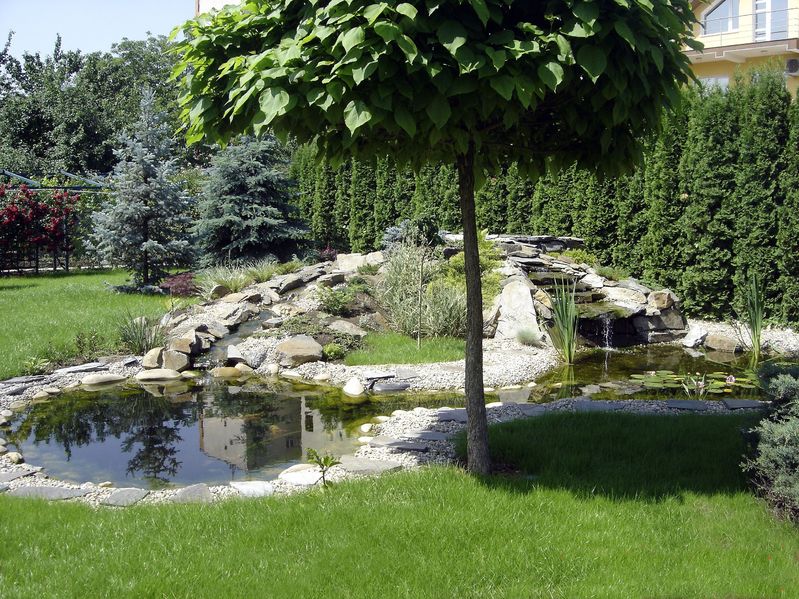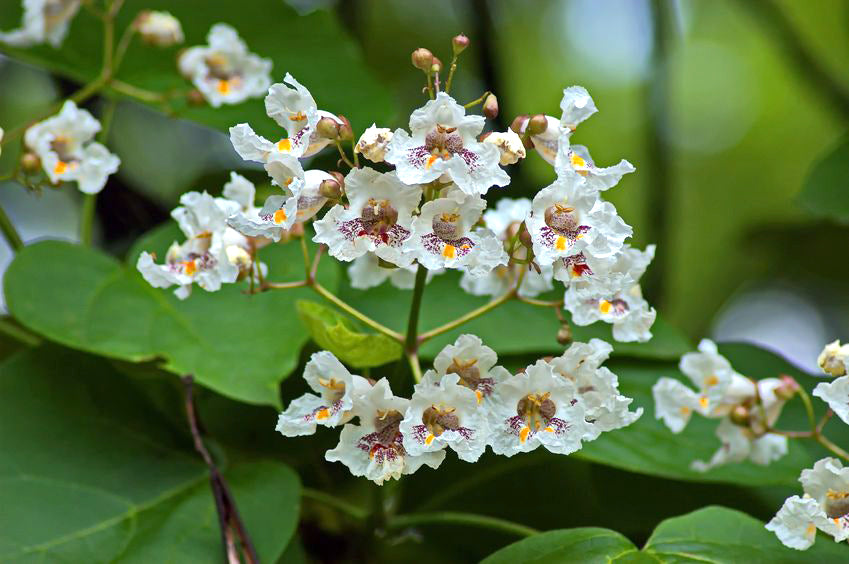Trumpet tree (Catalpa bignonioides)
No other flowering tree blooms this late in the year, making it a popular shrub that makes a wonderful addition to a front door. Rubbing the leaves can produce a somewhat unpleasant odor.

Growth form:
The trumpet tree is an extremely slow-growing small tree with a short, gnarled trunk. With its spreading crown consisting of thick, stiff branches, it can reach a total height of 15 to 18 meters. The 40-centimeter-long fruit capsules, which often persist until winter, are brown, long, and bean-shaped.
Leaf and flower:
The heart-shaped, dark green leaves, arranged opposite each other or in whorls of three, emerge late, forming between late May and early June. Leaf drop occurs quite early, after the leaves have turned a pale yellow in September.
The flowers appear at the end of the branch in June or July, measuring 10 to 15 centimeters long. Individual flowers, gathered on densely branched, loose panicles, have a trumpet-like shape. They are spotted with purple spots at the throat and marked by two yellow longitudinal stripes. The margin is brilliant white.

Site requirements/care measures:
To ensure the trumpet tree grows well, sowing under a glass container is recommended in February/March. The location should be sunny to partially shaded and, above all, sheltered from the wind. The soil should be freshly moist, deep, nutrient-rich, sandy-loamy, slightly acidic to alkaline. This frost-hardy gentleman requires little care, except for some watering during dry summers.
Varieties:
Two popular and recommended varieties of the trumpet tree are the 'Aurea,' the golden trumpet tree, and the 'Nana,' the globe trumpet tree. The 'Nana' has a spherical, compact crown and reaches a height of approximately 4 to 6 meters. The leaves are green and smaller. The 'Aurea' variety is somewhat weaker, with golden-yellow leaves that turn green later.
TEXT: Nora Kriegs









































































































